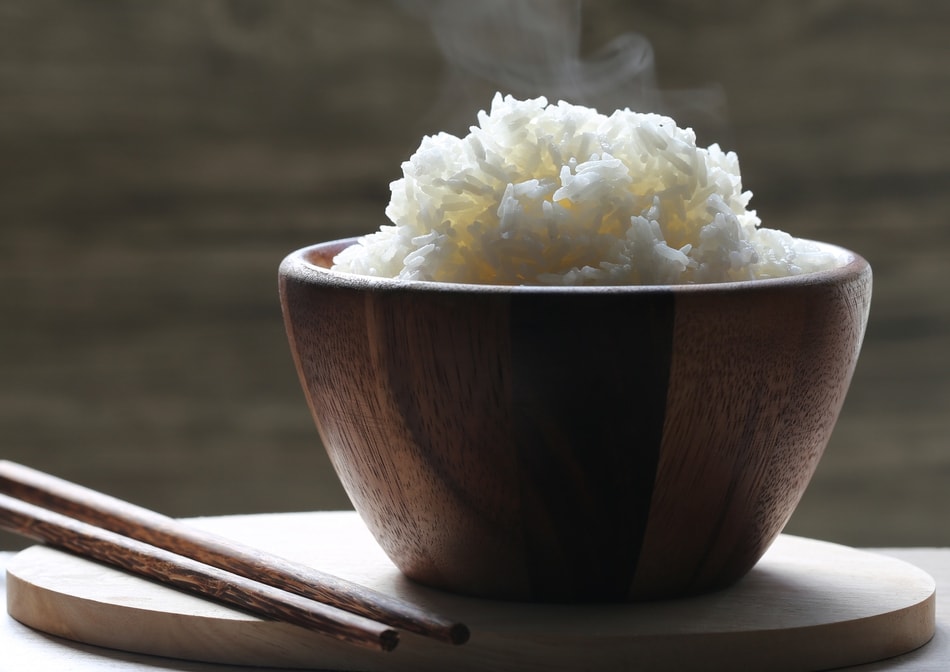There are many different types of rice, and it can be hard to know which one is the healthiest. Jasmine rice is a type of white rice that has a sweet flavor and a light texture. But is jasmine rice healthy?
What Is Jasmine Rice?

Jasmine rice is a type of fragrant, long grain rice. It has a delicate, sweet flavor and a slightly sticky texture. When cooked, jasmine rice turns a beautiful white color. Jasmine rice is often used in Thai and Vietnamese cuisine. It can be served plain or with vegetables, meats, or seafood.
Jasmine rice was once only enjoyed by wealthy and royal families, but it has since become more widely available. Today, jasmine rice is grown in many countries in Southeast Asia as well as California and Texas.
Jasmine Rice Nutrition Facts
According to the USDA, 1 cup of cooked jasmine rice has 181 calories, 39 grams of carbohydrate, 4 grams of protein, 1 gram of fat, 1 gram of fiber, and small amounts of calcium and iron.
Is Jasmine Rice Healthy?
Jasmine rice is high in carbohydrates, moderate in protein, and low in fat, making it a healthy choice for people who are looking for a filling, low-fat food. Jasmine rice is not a significant source of vitamins or minerals. But it does contain small amounts of calcium, iron, and some B vitamins.
White jasmine rice contains a small amount of fiber, which is an important nutrient for digestion. If you are looking for a healthier option, try brown jasmine rice. Brown jasmine rice has more fiber than white jasmine rice and also contains some iron and magnesium.
Jasmine rice is a healthy choice in moderation, but it's not a whole grain. Whole grain rice that has not been refined is healthier.
Jasmine rice is also gluten-free, making it a good option for people who have Celiac disease or gluten sensitivities.
Benefits of Jasmine Rice
While other types of rice that are whole grains are healthier options, jasmine rice still has some benefits:
- Low fat
- Good source of carbohydrates
- Gluten free
- Source of protein
- Versatile
- Tastes delicious and has a light texture
- Grown in a variety of regions, so it's easy to find
- Aromatic, so it makes food smell good
Does Jasmine Rice Raise Blood Sugar?
Jasmine rice is a high-carbohydrate food and consuming excessive amounts of carbohydrates can raise blood sugar levels. If you have diabetes or are prediabetic, you may want to limit your intake of Jasmine rice and other high-carbohydrate foods. Talk to your doctor or dietitian about the best diet for you to follow.
How to Cook Jasmine Rice
Cooking jasmine rice is easy and only takes a few steps. First, rinse the rice in a strainer to remove any excess starch. Then, add the rice to a pot and cover it with water. Bring the water to a boil, reduce the heat to low, and simmer for about 20 minutes. Drain any excess water then fluff the rice with a fork.
Ways to Use Jasmine Rice
One of the best things about jasmine rice is that it can be used in a variety of dishes. It goes well with Thai and Vietnamese cuisine, but it can also be used in dishes like curries and stir-frys. Jasmine rice is a popular choice for sushi because it doesn't have a strong flavor and it's light and fluffy. You can also eat jasmine rice alone as a side dish.
Jasmine Rice Vs. White Rice
The main difference between jasmine rice and white rice is the color and texture. Jasmine rice is a light beige color and has a slightly sticky texture. White rice is a pale ivory color and is less sticky. Jasmine rice is also more aromatic than white rice. When cooked, jasmine rice will release a subtle floral scent. White rice doesn't have much of an aroma.
Another difference between these two types of rice is the origin. Jasmine rice is native to Thailand and Vietnam. It is sometimes called Thai fragrant rice. White rice originated in India and Pakistan.
Jasmine rice tastes a little sweeter than white rice. Some people also say that jasmine rice has a nuttier flavor than white rice. Cooked jasmine rice grains are softer and fluffier than white rice grains.
Jasmine Rice Vs. Brown Rice
Jasmine rice is a white refined rice while brown rice is an unrefined grain. This means that brown rice has the bran and germ still intact while jasmine rice has the bran and germ removed. Because of this fact, brown rice is higher in fiber and nutrients than jasmine rice.
Jasmine rice takes about 20 minutes to cook, while brown rice takes about 45 minutes to cook. Brown rice also has a nuttier flavor and chewier texture than jasmine rice.
Jasmine Rice FAQs
Jasmine rice is not a whole grain because it is refined and has the bran and germ removed.
Store the rice in a cool, dry place. You can store it in an airtight container or in a sealed bag. Jasmine rice will stay fresh for up to six months when stored properly.
There are about 181 calories in a cup of cooked jasmine rice.
There are about 39 grams of carbohydrates in a cup of cooked jasmine rice.
There are about 4 grams of protein in a cup of cooked jasmine rice.
There is about 1 gram of fiber in a cup of cooked jasmine rice.
Bottom Line
Is jasmine rice healthy? Yes, it is healthy but not as healthy as whole grain types of rice. But if you are looking for a delicious and aromatic rice to try, jasmine rice is a great option. It is versatile, light, and flavorful.


